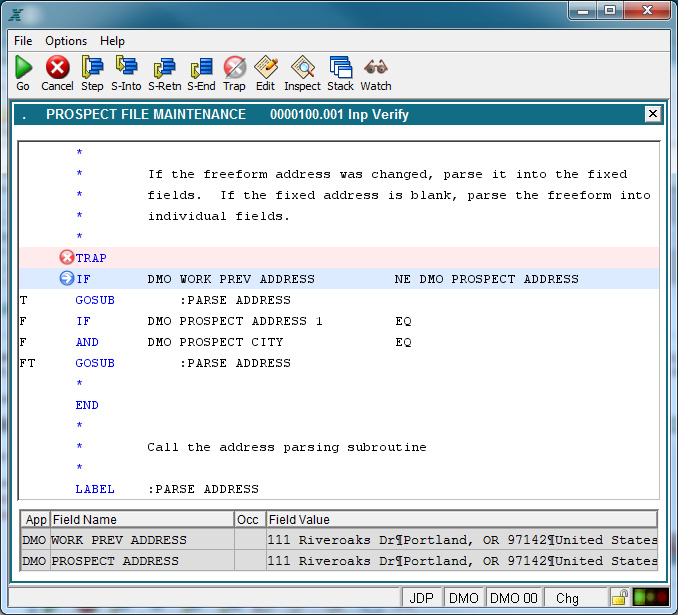Chapter 4-5: The Appx ILF Debugger |
Data Values Area The data values area displays the current values for any fields that are specified in the statement that is currently highlighted in the debugging area. The highlighted statement has not yet executed, so the values reflect the last statement executed. If the current statement has no specified fields, this area is blank. Consider the following statement example: IF DMO WORK PREV ADDRESS NE DMO PROSPECT ADDRESS The data area may look as follows, as shown below:
Data Area of a Debugger Screen If the highlighted statement specifies only one field, the other field name and value will be blank. In the following example, only one field is referenced: DISPLAY DMO WORK PREV ADDRESS (AT APPEARANCE # ) For statements such as TRAP that have no field references at all, both field names and values are blank, as shown previously. While stepping thru ILF code, you can press F11 to inspect the value of any field, as usual. When prompted for the field name, you can press F2 to scan the Data Dictionary for valid field names. You can also press F2 on the 'App' field to scan for valid Application Id's. |
Application Design Manual "Powered by Appx Software"1282 ©2006 By APPX Software, Inc. All Rights Reserved |
